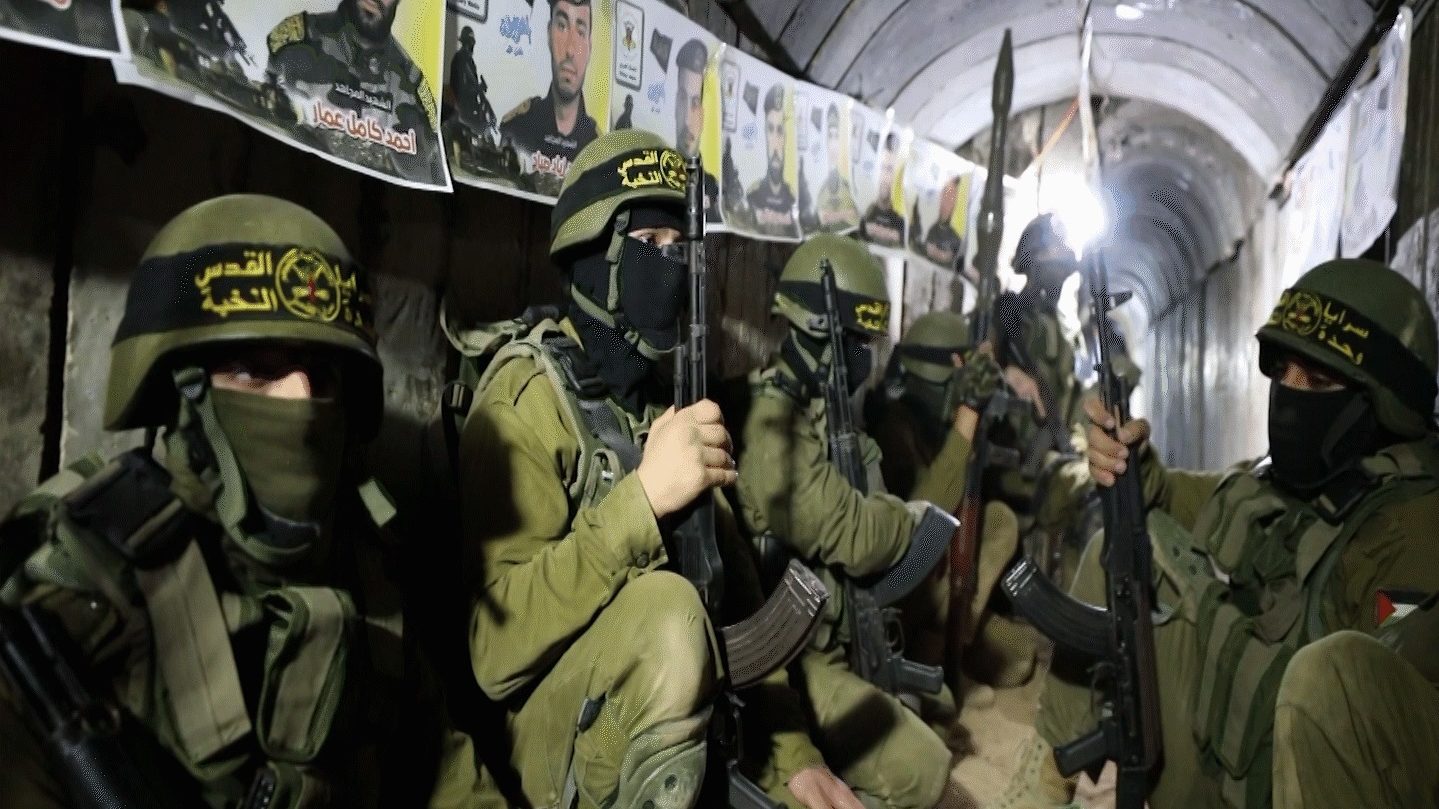Hamas, Islamic Jihad Rebuilding Gaza Tunnels Faster Than Expected
There is no way Israel could take out armed groups’ underground infrastructure, security expert says
[Gaza City] The system of tunnels used by armed Palestinian factions in the Gaza Strip has seen remarkable growth in form and function since 2000, presenting significant challenges to Israeli military and political leaders.
Beginning as primitive tunnels with limited depth and protection, today they make up fortified and organized networks extending more than 60 meters underground throughout the coastal enclave. Highly trained fighters from various Palestinian factions – mostly Hamas and Islamic Jihad – use them to hide rockets, munitions and fighters from Israeli detection and airstrikes, facilitate communication and infiltrate Israel.
Using cross-border tunnels, Hamas was able to capture Israeli soldier Gilad Schalit in June 2006. He was held in Gaza for more than five years, until he was released in a deal according to which Israel agreed to release 1,027 Palestinian and Arab Israeli prisoners, in October 2011.
Using the same strategy, Hamas claimed to capture two Israeli soldiers, Oron Shaul and Hadar Goldin, who went missing inside the Gaza Strip in separate battles during the 2014 war. Israel subsequently said the two men were killed in action, and that their bodies are still being held by Hamas.
The so-called Hamas Metro system also played a major role in the 11 days of fighting with Israel this past May.
Khader Abbas, a Gaza-based security expert, told The Media Line that the Gaza Strip was “the only place in the world where you can’t wage war above ground because it is an open, narrow and very small coastal area that can be easily scanned by the enemy’s advanced technology.
“However,” he argued, “the tunnels have turned that exposed enclave into an important and impregnable place for the Palestinian resistance fighters, who scored some significant achievements in the latest escalation.”
Thanks to the tunnels strategy, Palestinian combatants moved freely, hidden from Israeli spies and aerial surveillance, Abbas said.
This made destroying the underground infrastructure a top goal for Israel, which used planes, tanks and artillery to strike the Palestinian movements’ tunnel network.
After May’s mini-war ended, the Israeli military said it had destroyed “more than more than 100 kilometers [60 miles] of underground [real estate],” adding that these “tunnels constitute a strategic capability for Hamas.”
However, Yahya Sinwar, the leader of Hamas in the Gaza Strip, denied the claim. He said in a press conference that there were more than 500 kilometers [300 miles] of tunnels, only 5% of which were damaged by Israel during the latest escalation.
Abo Baraa, a fighter from Islamic Jihad’s Al-Quds Brigades military wing, supports that assertion, saying the damage was “negligible.”
“We had already repaired some of the damaged tunnels while the battle was still going on,” he told The Media Line.
Special units tasked with the tunnels’ repair and restoration were always present alongside the fighters, according to Abo Baraa.
Abbas said, “The tunnel network in Gaza is based on a very high level of security that even Israel can’t defeat unless it has the tunnel maps, which in my opinion is not the case, and still it won’t be an existential threat to the Strip’s tunnels.”
The remaining damage to Gaza’s tunnels will probably be repaired in less than three months, and those that were heavily targeted can be easily rerouted, Abbas opined.
Each Palestinian military movement has its own network of tunnels that it uses for operational tasks. However, the latest escalation saw a high degree of military coordination between the factions.
Abu Suhaib, another Islamic Jihad fighter, told The Media Line, “We in the Al-Quds Brigades don’t hesitate to pass on our military experiences to our brothers from different factional backgrounds. In fact, we gave some of them rockets under certain circumstances.”
Abbas said, “We witnessed a fierce fight and were amazed by the significant level of performance by the Palestinian resistance movements, who displayed a respectful degree of coordination and cooperation with each other.”


